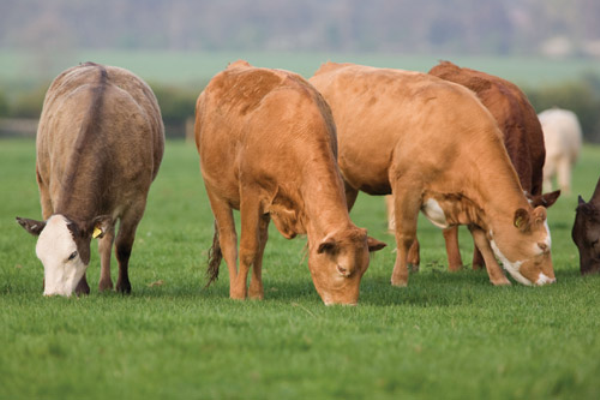Maximising Performance of Growing and Finishing Cattle
28 April 2022With exceptionally high feed costs this year it is vital that the target weight gain from a specific ration is being achieved. Any drop in daily liveweight gain will mean more days on farm and the example below illustrates how much more expensive that makes your feed:
Take a 550kg bullock, target DW 380kg at 54% KO on a silage / barley ration with a target DLWG of 1.2kg/day and a daily feed cost of £2.71:
Days to finish = 128
Total diet cost = £346.88
If the cattle are underperforming and only hitting 1.0kg/day on the same diet:
Days to finish = 153
Total diet cost = £414.63
This means that it is costing you £67.75 more for these underperformers in feed alone, there is the extra 25 days of bedding and labour costs on top of that to consider.
The key areas to look at to maximise performance of cattle are:
Feed & Water
– Check the balance of energy and protein in the ration is suitable for the stock being fed
– Diets that are too wet or too dry as this will reduce dry matter intake
– The addition of molasses in a mixed ration will help reduce cattle selecting ingredients (sorting) and minimise dust in dry rations
– Keep stored feed fresh to avoid spoilage prior to use
– Avoid sudden changes to the ration as the rumen microbes need time to adapt to dietary changes
– Ensure good feed access to maximise intakes and check the feeding area is dry and comfortable
– Clean out feed troughs at least weekly to avoid build up of old or heated feed
– Have your forage analysed as the quality of the silage will have a large impact on the performance of the animal and the level of supplementation required.
– Younger cattle have higher feed conversion rates and so ensuring weaning weights are maximised as this is where the weight on an animal costs you the least.
– Feed efficiency deteriorates with the increasing length of a finishing period
– Check water cleanliness and availability, lack of water depresses intakes. Clean out water troughs regularly and check the flow rates are adequate for the number of cattle in the group
Health
– Worm burdens and pneumonia will reduce feed intakes and therefore performance.
– Eliminate problems by health planning with your vet to have a have a plan to deal with issues such as fluke, worms and respiratory disease.
Stress
– Careful management of changes in diet and movement between farms and markets to reduce stress
– Avoid mixing cattle of different sizes and ages
– Ensure good air quality and ventilation in housing
– Avoid overstocking as this can increase disease issues and feed access as well as increasing stress which all reduce liveweight gains
Regular monitoring of gains to allow any changes in performance to be identified quickly and the source of the problem identified to allow the cattle to return to better performance. Any concerns with the ration and how the cattle are performing on it should be discussed with your nutritionist.
Lesley Wylie, Beef Specialist, SAC Consulting
lesley.wylie@sac.co.uk
Sign up to the FAS newsletter
Receive updates on news, events and publications from Scotland’s Farm Advisory Service

